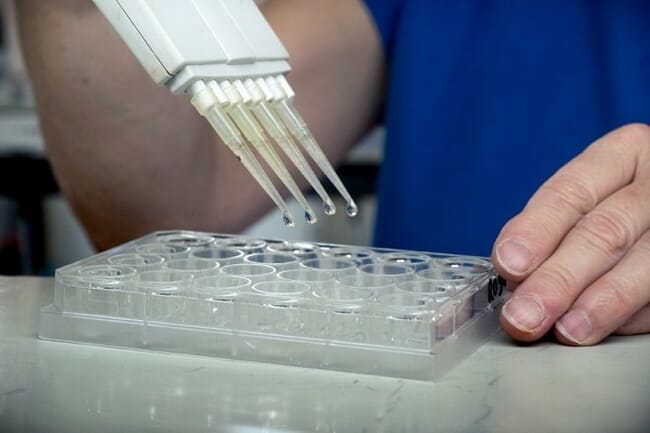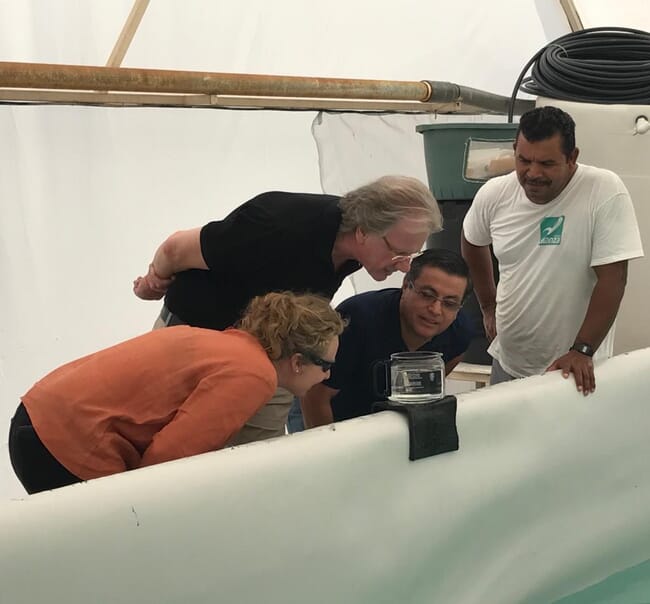At an event co-hosted by the two organisations, career aquaculture researchers and industry insiders explained why pooling their efforts and expertise has helped to improve the entire sector.

Philippe Léger, former managing director of INVE Aquaculture, explained the origins of the relationship, which began after INVE (Benchmark Advanced Nutrition), which was previously called Artemia Systems, span out from Ghent’s Artemia Reference Centre, in a bid to develop on-farm products based on the centre’s findings. They have maintained the research and development partnership ever since.
The collaboration helped develop and commercialise multiple Artemia-based products in the 1980s, taking the company from solely producing live feeds to developing specialty cysts with specific nutritional characteristics. From there, the R&D relationship with the university’s microbiology lab allowed Artemia Systems to focus on both hatchery health and nutrition. In the early 2000s, the company began characterising different bacillus species in hopes of developing effective probiotics designed for aquaculture.
Further collaborations with Ghent’s Faculty of Veterinary Medicine and Institute of Biotechnology VIB gave INVE access to world class expertise in diseases and genetics that could be applied to aquaculture. Consequently, some 10 years ago INVE signed a framework agreement with the UGent Aquaculture R&D Consortium, giving the company broad access to experts in multiple disciplines. Léger explained that this multidisciplinary research approach was the best way to develop products that could solve on-farm problems.
“The multidisciplinary platform is critical for a company like INVE for developing solutions that have a real impact on fish farms,” Léger said.
Who owns the IP?
Since the aquaculture industry is relatively young, it still sources many of its innovations from academia. Athene Blakeman, head of Benchmark’s Advanced Nutrition division, said that the aquaculture industry needs the breadth of research and high degree of exploration and innovation that academia generates. Having multiple research partners from different institutions is a boon. The company has a broader pool to draw on and is more likely to develop a strong product that could be widely used among producers. Across most aquaculture species, producers are not consolidated enough to do this sort of research in-house.
Blakeman also explained that if academic institutions hold the intellectual property (IP) rights to a technology, it makes it easier to apply it across multiple industries. If a company holds the IP, they may want to keep its application limited to a particular industry. She used parasitic controls as an example. Many have been developed for agriculture and could be useful for the aquaculture sector. However, companies might hesitate to licence the products for fish farming, wanting to keep it exclusively for crops.
The ideal collaboration
In Blakeman’s view, long-term collaborations are preferable. Developing a partnership over multiple years allows both industry players and researchers to understand each other’s goals. It builds more trust and transparency, leading to better outcomes. In her experience, long-term research collaborations mean that stakeholders are freer with their ideas and don’t waste time constantly re-negotiating the fine print. This isn’t the case in partnerships that are purely transactional.

Partnering with academic institutions has ensured that both to stay successful and competitive. This mutual success could be aquaculture’s secret weapon.
“Aquaculture needs academia to help it face the tough challenges that aren’t being addressed,” she reflected. In her view, since the bulk of aquaculture production is small-scale and takes place in developing countries, there is much opportunity for the industry to draw on academic insights to tackle on-farm problems.
But it is not just small-scale producers who benefit from collaborative research. As Blakeman observed, even the highly industrialised Atlantic salmon sector is still engaged with university-based research to address issues like sea lice and amoebic gill disease.
Whether INVE and Ghent’s collaboration will continue for another 37 years remains to be seen, but it’s clearly a partnership that’s proved productive – not just for the two organisations but also for the wider aquaculture community. As aquaculture grows, so do many of the challenges that producers face, and it is vital that industry and academia continue to work together to overcome these issues.




